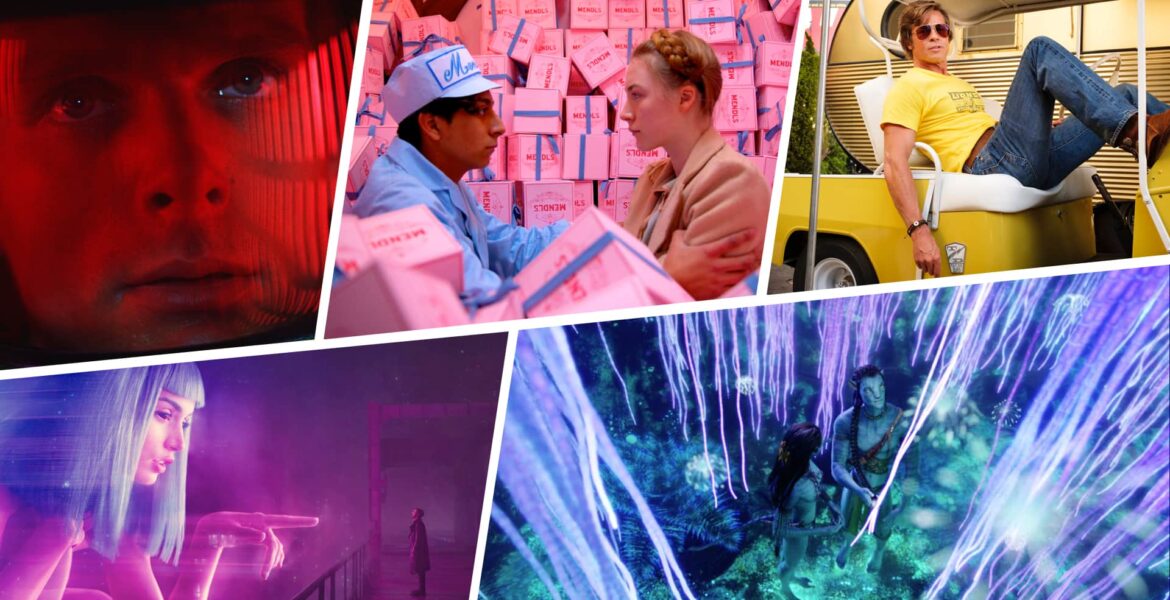Color is one of the most powerful, yet subtle, tools in filmmaking. It’s not just about creating a visually appealing scene or setting a mood — it’s about influencing the viewer’s emotional experience. From the bright reds of a fiery passion to the deep blues of melancholy, filmmakers have long used color to convey unspoken narratives and evoke specific emotional responses in audiences. Let’s explore how different colors in films can deeply impact our emotions.
Red: The Color of Passion and Danger

Red is an intensely emotional color. It’s often used in films to symbolize passion, love, violence, or danger. Think of the iconic use of red in Schindler’s List, where the color of the girl’s coat starkly contrasts with the black-and-white world, highlighting innocence and loss in the midst of horror. In romantic films like American Beauty, red might be used to evoke feelings of love or lust, while in thrillers such as Se7en, it may signal danger, anger, or warning. The emotional intensity associated with red can heighten a scene’s urgency or romantic tension, affecting the viewer’s pulse and heart rate.
Blue: Calm, Isolation, and Sorrow

Blue is often linked to feelings of tranquility, melancholy, and isolation. It can evoke a sense of coldness or distance — whether in the form of a blue sky in a serene scene or a dark, shadowy blue in a more introspective or sad moment. For example, in Requiem for a Dream, the use of cold, blue-toned lighting amplifies the sense of alienation and despair. Similarly, in films like The Godfather, blue lighting is often used in moments of reflection, subtly conveying both the calmness of control and the isolation of power.
Yellow: Joy, Caution, and Optimism

Yellow is often seen as a cheerful and optimistic color. It can stimulate feelings of happiness, hope, and energy, which is why it’s frequently used in comedies and feel-good movies like The Secret Life of Walter Mitty. The warmth of yellow light tends to convey a sense of joy, positivity, and even friendship. However, yellow can also signify caution or danger. It’s a color often associated with warning signs or the feeling of something being “off.” In horror films like The Shining, yellow might represent a sense of unease, as it’s a color of duality — bright, yet uncomfortable when used in unnatural contexts.
Green: Harmony, Envy, and Danger

Green is often seen as a color of balance, growth, and nature. It’s calming and restorative in films, especially when portraying scenes of harmony or peace in nature, like in The Secret Garden or Avatar, where lush green landscapes evoke a sense of vitality and renewal. However, green also has a darker side. It’s commonly associated with envy, jealousy, or even sickness. In The Matrix, the green tint to the world inside the Matrix represents a distorted reality and artificiality. In thrillers or horror films like The Witch, green can be used to represent a sense of unease or danger lurking beneath the surface.
Black: Mystery, Fear, and Power

Black is one of the most powerful colors in cinema. It is often associated with mystery, fear, and evil. Think of the shadows and dark silhouettes that often appear in horror or thriller genres, where black symbolizes the unknown, the sinister, or the foreboding. In films like The Dark Knight, black conveys both the internal struggles of Batman and his quest for justice, while also symbolizing his imposing presence as a symbol of power and fear. But black isn’t always negative — in many films, it can convey elegance and sophistication, as seen in Skyfall, where the black tuxedo signifies both power and refined style.
White: Purity, Innocence, and Emptiness

White is often a symbol of purity, innocence, and new beginnings. It’s commonly used in films to highlight moments of hope, clarity, or redemption. In films like The Seventh Seal or The Shawshank Redemption, white often appears in moments of transition, offering a stark contrast to the darker tones of the narrative. In other contexts, white can also represent emptiness or sterility. In horror films like The Others, an all-white setting can evoke feelings of isolation, alienation, or eerie calm. This juxtaposition of purity and emptiness can create unease, as seen in The White Ribbon, where white emphasizes the coldness and secrecy of the community.
Purple: Mystery, Luxury, and Creativity

Purple, a color historically associated with royalty, luxury, and mystery, is often used in film to evoke creativity, fantasy, and otherworldliness. In The Grand Budapest Hotel, Wes Anderson employs rich purples and pinks throughout the film, creating a whimsical, dreamlike atmosphere. These colors are a hallmark of the film’s unique, stylized world, where reality blends with fiction and magic. In The Color Purple, the title itself is a metaphor for the spiritual growth and personal empowerment of the film’s protagonist, Celie. The purple color symbolizes her transition from oppression to freedom and inner strength. It serves as a marker of her transformation and self-realization.
The Role of Lighting and Contrast in Color Perception

More than individual colors, entire color palettes are often used to reflect character development or thematic changes. For instance, in The Wizard of Oz, Dorothy’s world is initially drab and sepia-toned, but as soon as she enters Oz, the world explodes in vibrant color, symbolizing the wonder and adventure of her journey. As her character grows, the colors around her become more complex, reflecting her own emotional growth.
Similarly, in La La Land, color plays a key role in representing the characters’ emotions as they navigate their dreams and romantic relationship. The film uses bold, expressive colors that shift with the characters’ internal conflicts, such as the warm hues of their initial love affair and the cooler tones as they face the realities of their lives.











